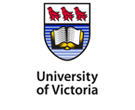Marine conservation from a First Nations perspective: a case study of the principles of the Hulquminum of Vancouver Island, British Columbia
| Title | Marine conservation from a First Nations perspective: a case study of the principles of the Hulquminum of Vancouver Island, British Columbia |
| Publication Type | Thesis |
| Year of Publication | 2005 |
| Authors | Ayers CA |
| Advisor | Dearden P |
| Academic Department | Geography |
| Degree | Master of Science M.Sc. |
| Date Published | April 10, 2008 |
| University | University of Victoria (Canada) |
| City | Victoria, BC |
| Keywords | Hulquminum Indians -- British Columbia -- Vancouver Island, Marine resources conservation -- British Columbia -- Vancouver Island |
| Abstract | Evidence for the decline of marine biodiversity is being noted worldwide (Pauly and Watson, 2003). Indigenous peoples around the world have a key role to play in marine conservation efforts. With the collapse of many fisheries stocks, including stocks in the Georgia Strait of British Columbia, Canada, the Canadian Federal Government is pursuing conservation strategies such as Marine Protected Areas (MPAs). Section 35 of Canadas Constitution Act protects indigenous peoples rights, such as the right to harvest natural resources for food, social and ceremonial use. Conservation efforts that potentially infringe upon Aboriginal rights secure a duty to consult and accommodate First Nations interests on the Government of Canada. Indigenous peoples on Canadas West Coast ofen oppose the creation of MPAs as these have the potential to impact their indigenous rights. This opposition has contributed to the delay in the development of MPAs on the Pacific Coast of Canada. This research contributes to understanding of indigenous use of marine resources and how effective government proposed MPAs are in meeting the conservation goals and perspectives of the Hulquminum peoples. First Nations marine conservation and management principles, goals and objectives are explored, through a case study of a Central Coast Salish indigenous group, the Hulquminum. These approaches are compared to current government principles and strategies. Some similarities exist between the two, although there are fundamental differences that may be dificult to reconcile. The Hulquminum worldview that everything is connected has some similarities to ecosystem-based management where humans are viewed as part of the ecosystem. However, in a Hulquminum philosophy, humans are a fundamental component of the ecosystem, whereas ecosystem-based management recognizes humans as part of the ecosystem in order to better manage anthropogenic impacts. Simply integrating traditional ecological knowledge in current management efforts does not go far enough to address the goal of reconnecting Hulquminum Mustimuhw (people) to the marine environment and resources. Attitudes towards permanent no-take zones are influenced by beliefs such as limiting aboriginal rights by closing areas to harvesting. Participant support for permanent no-take zones was significantly increased if the notake areas were proposed and managed by Hulquminum. Community-based management, where First Nations have a legitimate role in managing may begin to address this gap. Further exploration of how to accommodate First Nations principles, goals and objectives directly in marine conservation and management of marine resources will increase the success of marine conservation eforts on the Pacific Coast of Canada. This thesis provides the beginning of a foundation to bridge between current government conservation strategies and traditional management systems. The integration of social sciences and natural sciences in conservation eforts will increase the acceptance and success of conserving marine ecosystems. |
| URL | <u>http://hdl.handle.net/1828/680</u> |


 The Social Economy Student Network
The Social Economy Student Network


